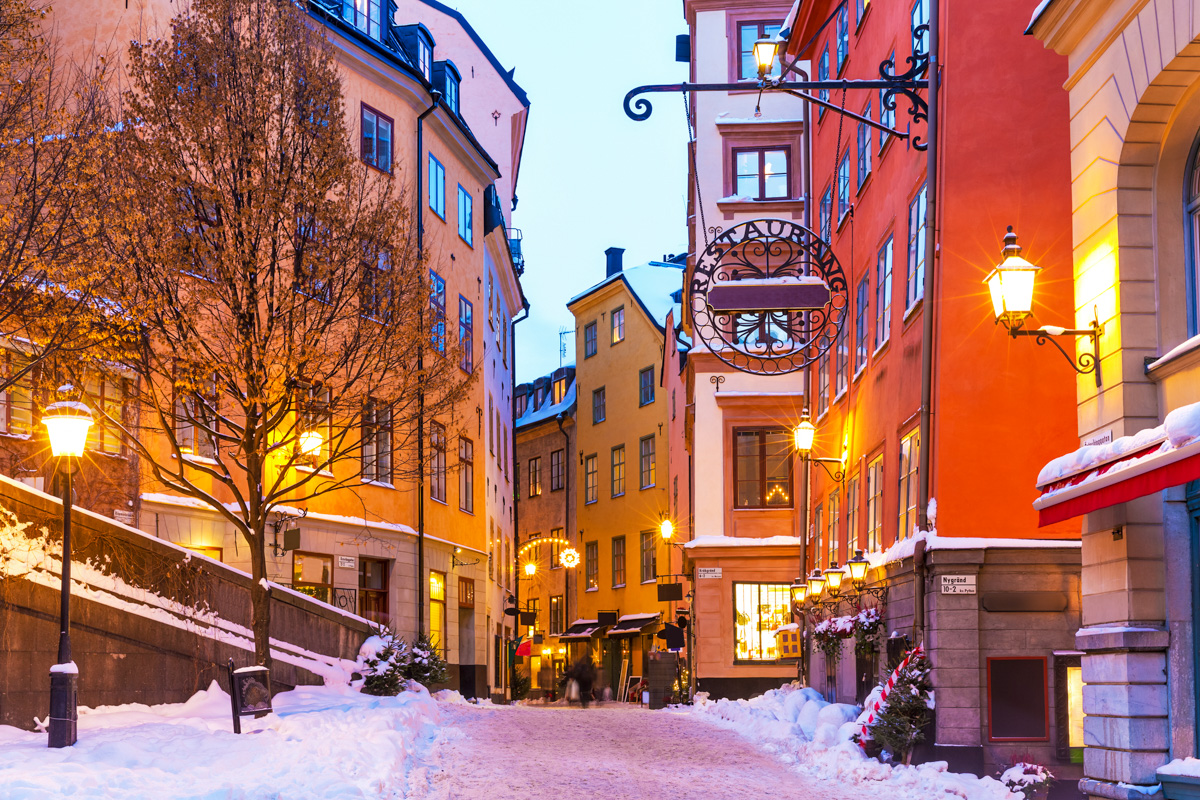When you picture Sweden, images of vast, snow-covered landscapes and chilly temperatures likely come to mind. While this isn’t entirely wrong, it’s a very incomplete picture. The weather in Sweden is far more complex and surprising than most people realize. It’s a land of dramatic contrasts and unique climatic phenomena. If you’re considering a move or a visit to this beautiful Scandinavian nation, understanding its weather is crucial. Prepare to have your assumptions challenged as we uncover five things you probably don’t know about the weather in Sweden.

1. The Surprising Mildness The Gulf Stream‘s Gift
One of the biggest misconceptions about the weather in Sweden is its perceived perpetual cold. While Sweden is a northern country, its climate is significantly milder than other places at similar latitudes. You can thank the Gulf Stream for this. This warm Atlantic ocean current brings milder air to Scandinavia, creating a more temperate climate than you might expect. This means that southern and central Sweden often experience pleasant summers and relatively mild winters.
How the Gulf Stream Affects Swedish Climate
The influence of the Gulf Stream is a fascinating aspect of the weather in Sweden. This powerful current transports warm water from the Gulf of Mexico all the way to the North Atlantic. As this warm water travels north, it heats the air above it. The prevailing westerly winds then carry this warmer air over Sweden, resulting in temperatures that are, on average, several degrees higher than in other regions at the same latitude, such as Siberia or parts of Canada and Alaska. This effect is most noticeable in the southern parts of the country, where the proximity to the ocean has a significant moderating influence.
2. A Country of Three Climates Dramatic Regional Differences
Sweden is a long country, stretching over 1,500 kilometers from north to south. This vast distance results in significant regional variations in the weather in Sweden. In fact, you can experience three distinct climate zones within its borders. This diversity means that your experience of Swedish weather will depend heavily on where you are in the country.
Southern Sweden A Temperate Haven
The south of Sweden, including cities like Malmö and Gothenburg, enjoys a temperate oceanic climate. Summers are generally warm and pleasant, with average temperatures in the low 20s Celsius (high 60s Fahrenheit). Winters are relatively mild, with temperatures often hovering around freezing. Snowfall is common but not always long-lasting. This region has four distinct seasons, offering a varied and enjoyable climate throughout the year.
Central Sweden Where Oceanic and Continental Climates Meet
Central Sweden, home to the capital city of Stockholm, has a humid continental climate. Here, you’ll find a more pronounced difference between the seasons. Summers are warm, often with long, sunny days. Winters are colder and snowier than in the south, providing a true winter wonderland experience. The mix of oceanic and continental influences creates a dynamic and ever-changing weather pattern.
Northern Sweden The Subarctic Experience
Northern Sweden, a vast and sparsely populated region, has a subarctic climate. Winters are long, dark, and very cold, with temperatures regularly dropping far below freezing. This is the land of the midnight sun in summer and the polar night in winter. While summers are short, they can be surprisingly warm. The weather in Sweden’s northernmost regions offers a truly unique and dramatic experience for those who embrace the extremes.
3. More Than Just Snow Unexpected Weather Events
While snow is a significant feature of the weather in Sweden, especially in the north, the country also experiences a variety of other, sometimes unexpected, weather events. In recent years, Sweden has seen an increase in extreme weather phenomena, including heatwaves, droughts, and heavy rainfall leading to floods. This highlights the changing nature of the global climate and its impact on Scandinavia.
Summer Heatwaves and Wildfires
Contrary to the popular image of a cold country, Sweden can and does experience significant heatwaves during the summer months. In recent years, record-breaking temperatures have led to widespread wildfires, particularly in the central and northern parts of the country. This serves as a stark reminder that the weather in Sweden is not always cold and snowy.
Flooding and Heavy Rainfall
While some summers are dry, others can be exceptionally wet. Periods of intense rainfall can lead to flooding, especially in the southern and western regions. This is a testament to the variability of the weather in Sweden, where conditions can change dramatically from one year to the next.
4. The Dance of Light and Darkness Endless Days and Polar Nights
A truly unique aspect of the weather in Sweden is the extreme variation in daylight hours throughout the year. This is a direct result of the country’s high latitude. The long summer days and equally long winter nights have a profound impact on life in Sweden and are an integral part of its climate and culture.
The Midnight Sun A Summer Phenomenon
In the northernmost parts of Sweden, above the Arctic Circle, the sun does not set for several weeks during the summer. This phenomenon, known as the midnight sun, creates a surreal and magical atmosphere. It allows for endless days of exploration and outdoor activities, fundamentally shaping the summer experience.
The Polar Night A Time for Cozy Contemplation
Conversely, the winter brings the polar night to the far north. For a period, the sun does not rise above the horizon, plunging the landscape into a prolonged twilight. While this might sound daunting, it is a time of great beauty, with the snow-covered landscapes often illuminated by the magical glow of the Northern Lights (Aurora Borealis).
5. Historical Storms and a Changing Climate
The weather in Sweden has a history as dramatic as its landscape. The country has been shaped by powerful windstorms that have left their mark on its forests and communities. While historical records provide insight into past weather patterns, modern climate change is bringing new challenges and uncertainties.
A History of Powerful Storms
Sweden has a long history of being affected by severe windstorms. These storms, often originating in the Atlantic, can bring destructive winds and heavy precipitation. Historical accounts and meteorological records reveal the cyclical nature of these events and their significant impact on the country.
The Future of Weather in Sweden
Climate models predict that the weather in Sweden will continue to change. Projections suggest warmer and wetter winters, with more precipitation falling as rain rather than snow in the south. Summers are expected to become hotter and drier, increasing the risk of droughts and wildfires. Understanding these long-term trends is crucial for anyone planning a future in Sweden.
Follow us on social media and website for more insights!













